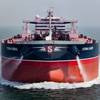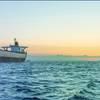Containership Volume To Slow
Analysts said it was the container carrying behemoths on the trans-Pacific trades that had started to suffer first, largely because of U.S. slow down. Many can load over 6,000 truck-sized units at once, packed with anything from refrigerated fruit and shellfish through to televisions and cars. "My impression is the transPacific, which did so well in 1999 and 2000, has probably been worst hit," Rogan Mc Lellan, head of containership research at London shipbroker Clarksons, said. "Rates have dipped, but they haven't slumped." The Commonwealth Group estimated the Pacific decline at 10-15 percent since a year ago. The result is that earnings will fall. The Commonwealth Group talked of "rate cutting to secure the available cargo", while London shipbroker Howe Robinson contemplated the possibility of "devastating freight rates that will soon plunge results into the red."
Clarksons' Rogan Mc Lellan said on top of the threats to shipping demand, there was also the danger of huge oversupply. "We're not talking full-on recession, just a return to more normal economic growth levels, but even at these normal levels the order-book for new ships is hugely overweighted," he said. The orders were placed during the two boom years of 1999 and 2000. Shipping database Lloyd's Register-Fairplay lists over 100 new giant ships under construction, each capable of carrying over 5,000 truck-sized containers. Many smaller ships are also in the pipeline.
"The Japanese are the most exposed, but the Germans have gone in there quite heavily too," Fairplay shipbuilding analyst David Holder said. He said that between them Japan's NYK, K-Line and Mitsui O.S.K Lines had placed about a third of the big orders, while German tax-incentive schemes were also responsible for about a third. Howe Robinson appeared unimpressed by wisdom of tax-backed schemes. "To add to the fragility of the market, financiers supported by preferential tax schemes are making an abundance of money available for further investment, so is it any wonder then that the market is so cyclical?" it asked.
Traditional European operators had been less involved. Germany's Hapag-Lloyd and A P Moller, Britain's P&O and Greece's Costamare had between them only contributed to one tenth of the glut. One outcome could be consolidation within the market, and many smaller players could disappear. "Taking on the big boys with the deep pockets is fraught with peril... minnows make a tasty lunch," said the Commonwealth report. It added that even the biggest players were not immune to harm: "The early weeks of September will guide us greatly in terms of market direction... the large liner companies will be watching with a nervous eye as the economic data and financial forecasts are published." - (Reuters)













